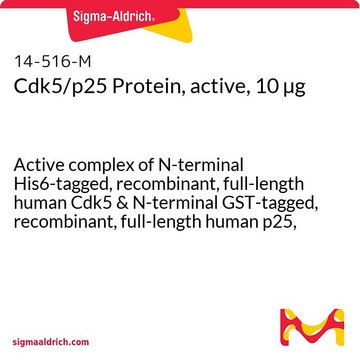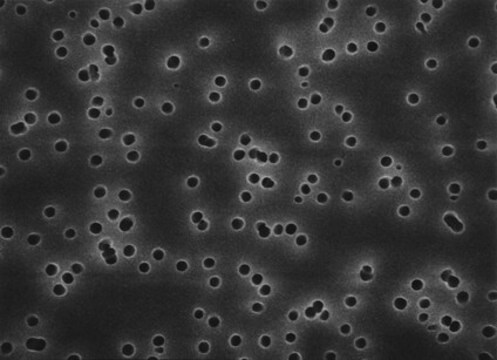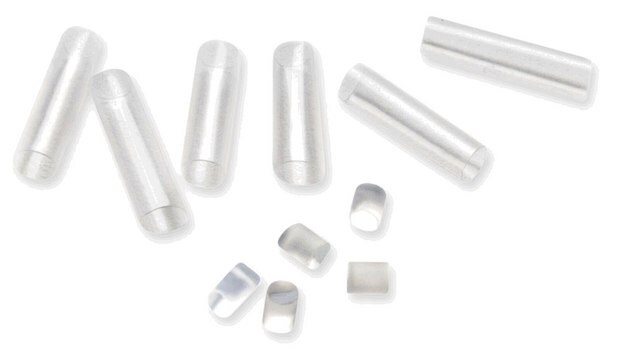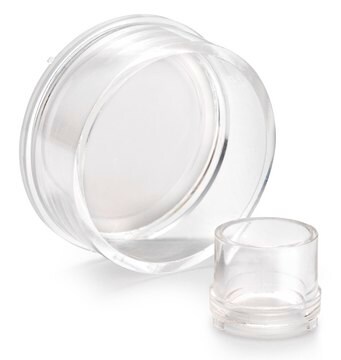MABF3145
Anti-Envelope glycoprotein B Antibody, HCMV Antibody, clone 27-156
Sinonimo/i:
gB
About This Item
Prodotti consigliati
Origine biologica
mouse
Livello qualitativo
Forma dell’anticorpo
purified antibody
Tipo di anticorpo
primary antibodies
Clone
27-156, monoclonal
PM
calculated mol wt 101.95 kDa
observed mol wt ~120-140 kDa
Purificato mediante
using protein G
Reattività contro le specie
virus
Confezionamento
antibody small pack of 100 μg
tecniche
ELISA: suitable
immunocytochemistry: suitable
immunofluorescence: suitable
immunoprecipitation (IP): suitable
neutralization: suitable
western blot: suitable
Isotipo
IgG2bκ
Sequenza dell’epitopo
C-terminal half
N° accesso ID proteina
N° accesso UniProt
Temperatura di conservazione
-10 to -25°C
Informazioni sul gene
vaccinia virus ... HA(3654615)
Descrizione generale
Specificità
Immunogeno
Applicazioni
Evaluated by Western Blotting with recombinant HCMV glycoprotein B.
Western Blotting Analysis (WB): A 1:200,000 dilution of this antibody detected recombinant HCMV glycoprotein B.
Tested applications
Immunoprecipitation Analysis: A representative lot immunoprecipitated HCMV Envelope glycoprotein B in Immunoprecipitation applications (Reschke, M., et al. (1995). J Gen Virol. 76(Pt1); 113-22; Meyer, G.A., et al. (2000). J Biol Chem. 275(6); 3857-66; Vanarsdall, A.L., et al. (2008). J Virol. 82(23);11837-50).
Immunocytochemistry Analysis: A representative lot detected HCMV Envelope glycoprotein B in Immunocytochemistry applications (Reschke, M., et al. (1995). J Gen Virol. 76(Pt1); 113-22; Jean, F., et al. (2000). Proc Natl Acad Sci USA. 97(6); :2864-9; Meyer, G.A., et al. (2000). J Biol Chem. 275(6); 3857-66; Strive, T., et al. (2002). J Virol. 76(3); 1252-64).
Neutralizing: A representative lot neutralized Envelope glycoprotein B of HCMV. (Schoppel, K., et al. (1996). Virology. 216(1);133-45; Kropff, B., et al. (1997). J Gen Virol. 78(Pt8); 1999-2007; Vanarsdall, A.L., et al. (2008). J Virol. 82(23); 11837-50).
Immunofluorescence Analysis: A representative lot detected HCMV Envelope glycoprotein B in Immunofluorescence applications (Reschke, M., et al. (1995). J Gen Virol. 76(Pt1);113-22; Jean, F., et al. (2000). Proc Natl Acad Sci USA. 97(6); 2864-9; Meyer, G.A., et al. (2000). J Biol Chem. 275(6); 3857-66; Strive, T., et al. (2002). J Virol. 76(3); 1252-64; Vanarsdall, A.L., et al. (2008). J Virol. 82(23); 11837-50).
ELISA Analysis: A representative lot detected HCMV Envelope glycoprotein B in ELISA applications (Sharma, S., et al. (2013). Virology. 435(2); 239-49).
Western Blotting Analysis: A representative lot detected HCMV Envelope glycoprotein B in Western Blotting applications (Reschke, M., et al. (1995). J Gen Virol. 76(Pt1); 113-22; Schoppel, K., et al. (1996). Virology. 216(1); 133-45; Kropff, B., et al. (1997). J Gen Virol. 78(Pt8);1999-2007; Jean, F., et al. (2000). Proc Natl Acad Sci USA. 97(6); 2864-9; Sharma, S., et al. (2013). Virology. 435(2); 239-49; Khanh Le-Trilling, V. T., et al. (2020). Cell Rep. 30(7); 2248-2260).
Note: Actual optimal working dilutions must be determined by end user as specimens, and experimental conditions may vary with the end user.
Stato fisico
Stoccaggio e stabilità
Altre note
Esclusione di responsabilità
Non trovi il prodotto giusto?
Prova il nostro Motore di ricerca dei prodotti.
Codice della classe di stoccaggio
13 - Non Combustible Solids
Classe di pericolosità dell'acqua (WGK)
WGK 1
Punto d’infiammabilità (°F)
Not applicable
Punto d’infiammabilità (°C)
Not applicable
Certificati d'analisi (COA)
Cerca il Certificati d'analisi (COA) digitando il numero di lotto/batch corrispondente. I numeri di lotto o di batch sono stampati sull'etichetta dei prodotti dopo la parola ‘Lotto’ o ‘Batch’.
Possiedi già questo prodotto?
I documenti relativi ai prodotti acquistati recentemente sono disponibili nell’Archivio dei documenti.
Il team dei nostri ricercatori vanta grande esperienza in tutte le aree della ricerca quali Life Science, scienza dei materiali, sintesi chimica, cromatografia, discipline analitiche, ecc..
Contatta l'Assistenza Tecnica.








